
Kaplan Turbine ER3I
One of the most important milestones in the history of hydropower is the invention of the Kaplan turbine. It is a machine stemming from the Francis turbine, which Viktor Kaplan was originally trying to improve. However, it gradually developed into the creation of a completely new solution of an impeller with an axial flow rate and adjustable blades. The first patent relating to the new.

Kaplan sktypesshapedoubleregulatedhorizontalkaplanturbine
A reaction turbine is one sort of turbine that generates torque by reacting to the weight or pressure of a fluid. The operation of reaction turbines can be described by Newton's third law of motion (i.e. action and reaction are balanced and reverse). The Kaplan turbine is a full reaction turbine that operates by generating lift on the.

Kaplan Hydro Turbine GE Renewable Energy
The Kaplan turbine is a hydraulic turbine that uses small gradients, up to a few tens of meters, but with a massive flow of water rates, from 200/300 m³ / s. Kaplan turbines are widely used throughout the world in hydropower plants for electrical power production. Constructively, this hydraulic turbine is a propeller, where the blades can be.

Kaplan Turbine Working , Power and Efficiency. YouTube
Definition of Kaplan Turbine. Kaplan turbine is a reaction turbine that is used for low heads and requires a large quantity of water for developing a large amount of power. Kaplan turbine runs faster. High efficiency. It is located between the high-pressure water source and the low-pressure water exit.
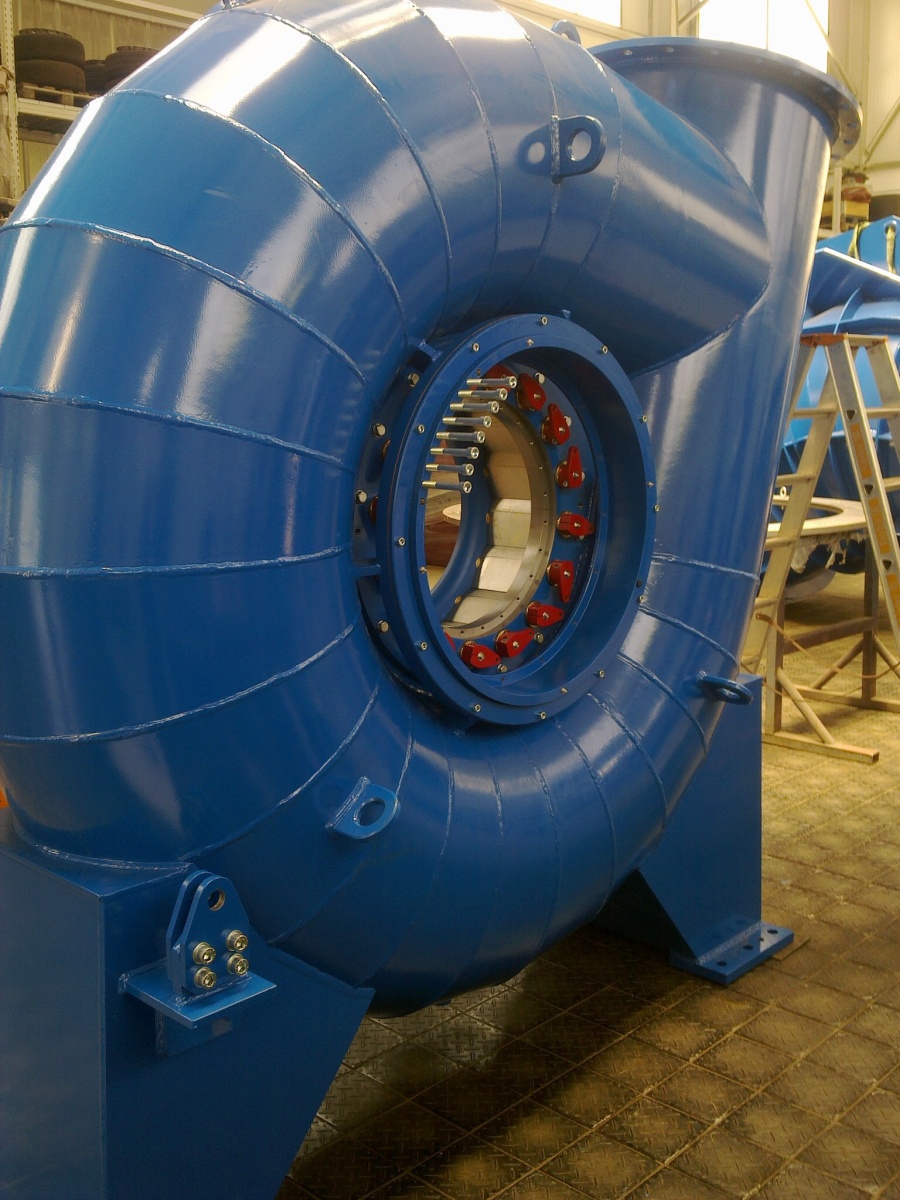
Kaplan spiraltypekaplanturbine Hydrohrom s.r.o.
The Kaplan turbine is a specialized water turbine designed to generate electricity from flowing water, especially in low-head, high-flow environments. Introduced in 1913 by its namesake, Viktor Kaplan, this turbine has since carved a niche for itself in the world of renewable energy [1]. At its core, the Kaplan turbine working principle.

Commissioning of 5 MW Kaplan Turbines in Vietnam Gugler Water Turbines
Kaplan Turbine. The working principle of a Kaplan Turbine mainly depends on the axial flow reaction principle because, in axial flow types turbines, the water supplies throughout the runner along the direction which is parallel to the rotation axis of the runner. In the turbine, the water at the inlet possesses both pressure & kinetic energy for effective blades rotation within a hydro-power.
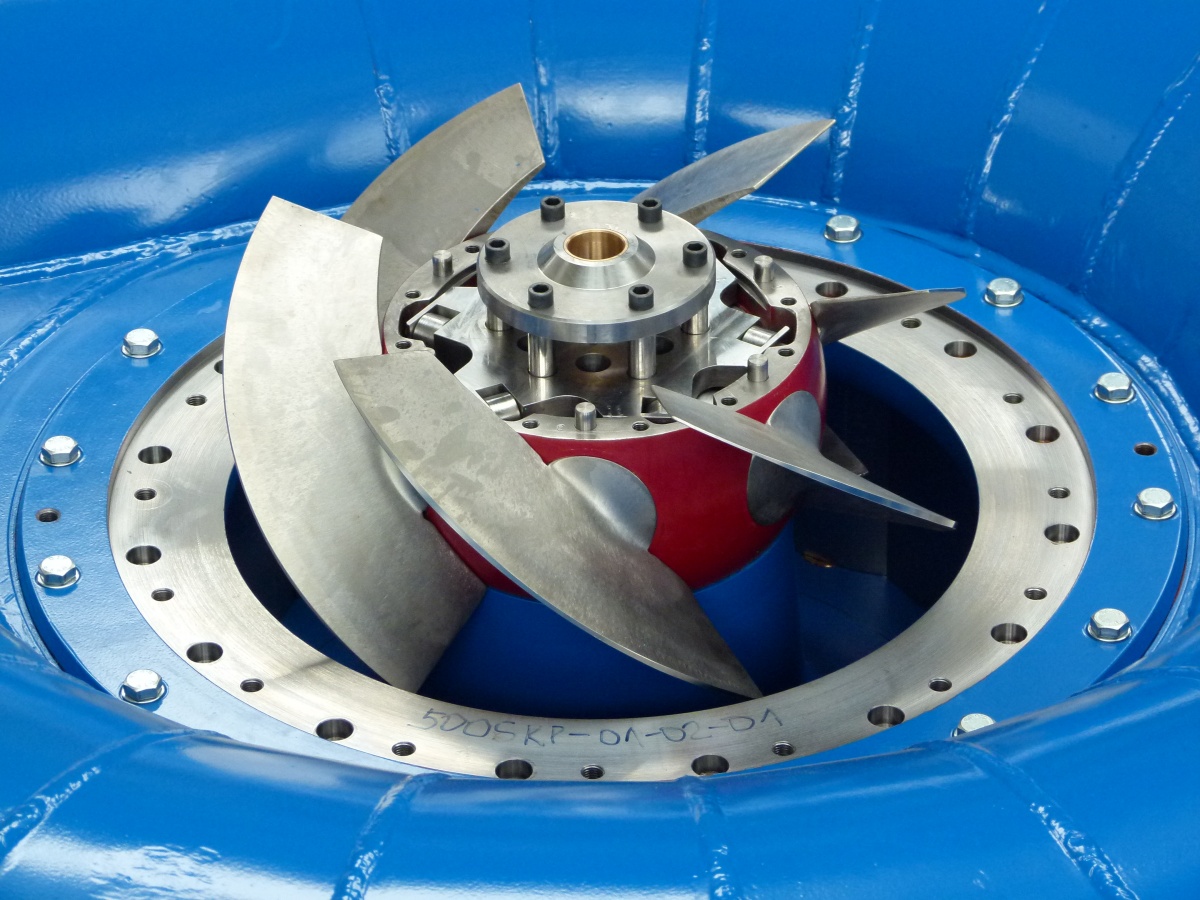
Kaplan spiraltypekaplanturbine Hydrohrom s.r.o.
A widely used turbine type is the Kaplan Turbine, looking very much like a giant propeller. Its efficiency is very high, it can "capture" over 90% of the kinetic energy of the outlet stream. Today, however, another turbine type is taking over - namely, the Francis Turbine (Fig. 5.11). It was invented 170 years ago by a Massachusetts.
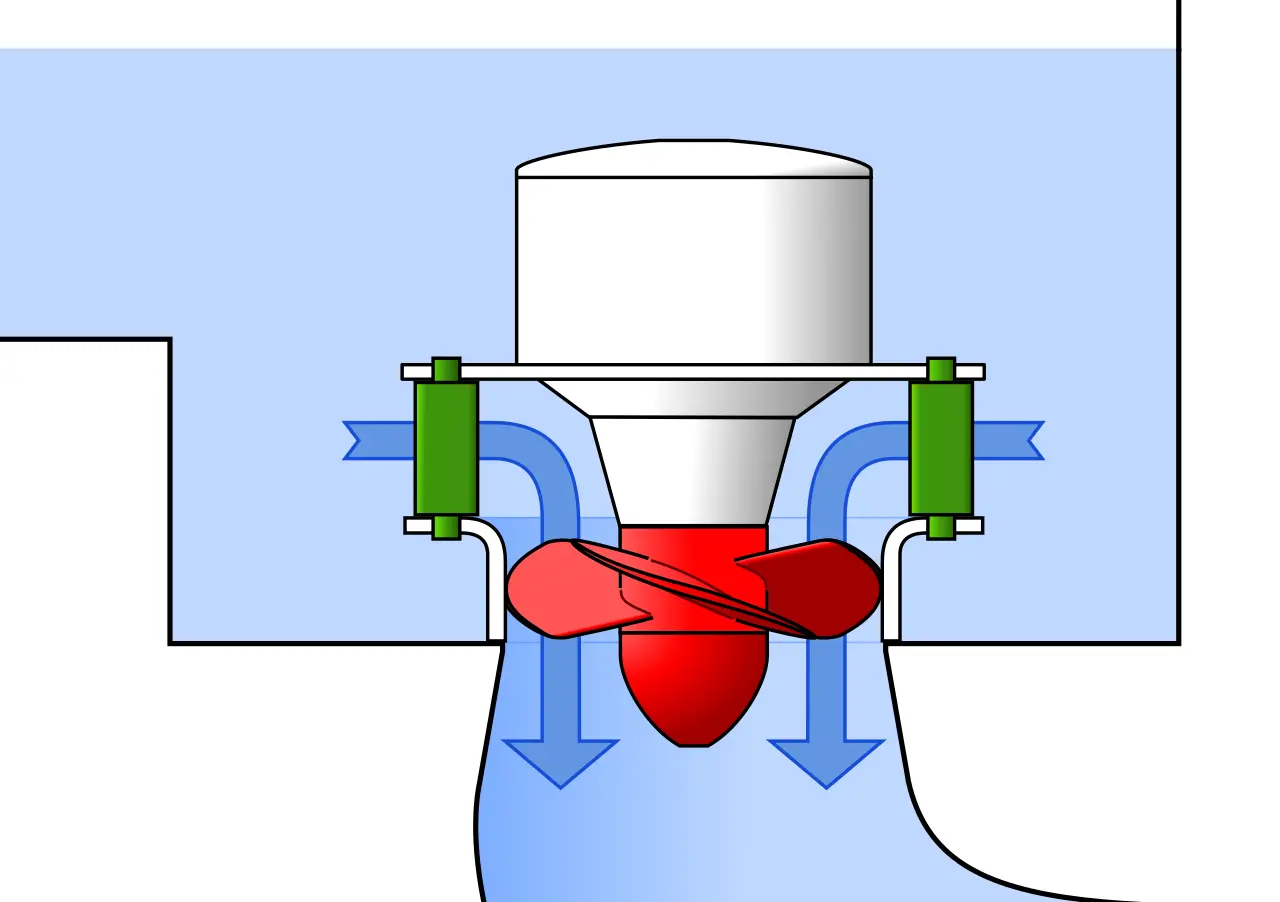
What is Kaplan Turbine and How It Works? Mechanical Booster
A Kaplan turbine is a type of propeller hydro turbine (specifically a reaction turbine) used in hydroelectric plants.Water flows both in and out of Kaplan turbines along its rotational axis ().What makes Kaplan turbines special is the blades can change their angle on demand to maintain maximum efficiency for different flow rates of water. Water flowing through a Kaplan turbine loses pressure.

Kaplan Hydro Turbine S type, P=300kW YouTube
Although the power output increases with the inlet velocity the efficiency of the runner reaches a maximum of 93.01% with an inlet velocity of 7.64 m.s-1 and then starts to decrease. The original theoretical design in CFD shows a maximum efficiency of about 51-52% (exactly 50.98%), somewhere between 7.64 and 8 m.s-1.
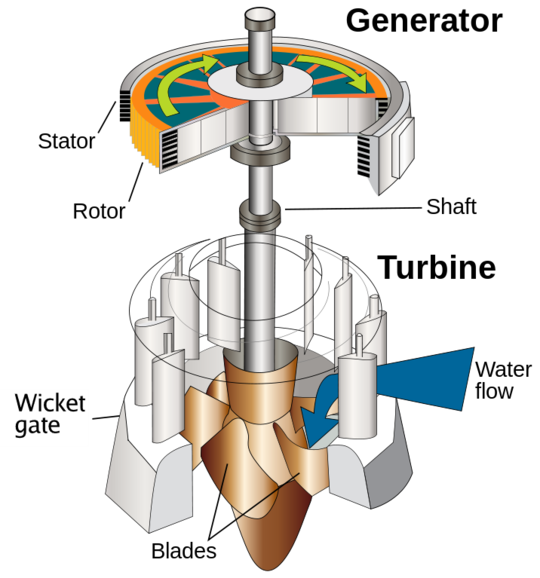
What is Kaplan Turbine? Diagram and Working Principles Linquip
1. Type. Pelton turbine is an impulse type water turbine. Francis Turbine is an inward flow reaction turbine. Kaplan turbine is a propeller type reaction turbine. 2. Head. It is used for high heads ranging from 250 to 1000m. The operating water head of a Francis turbine ranges from 40 to 600m.
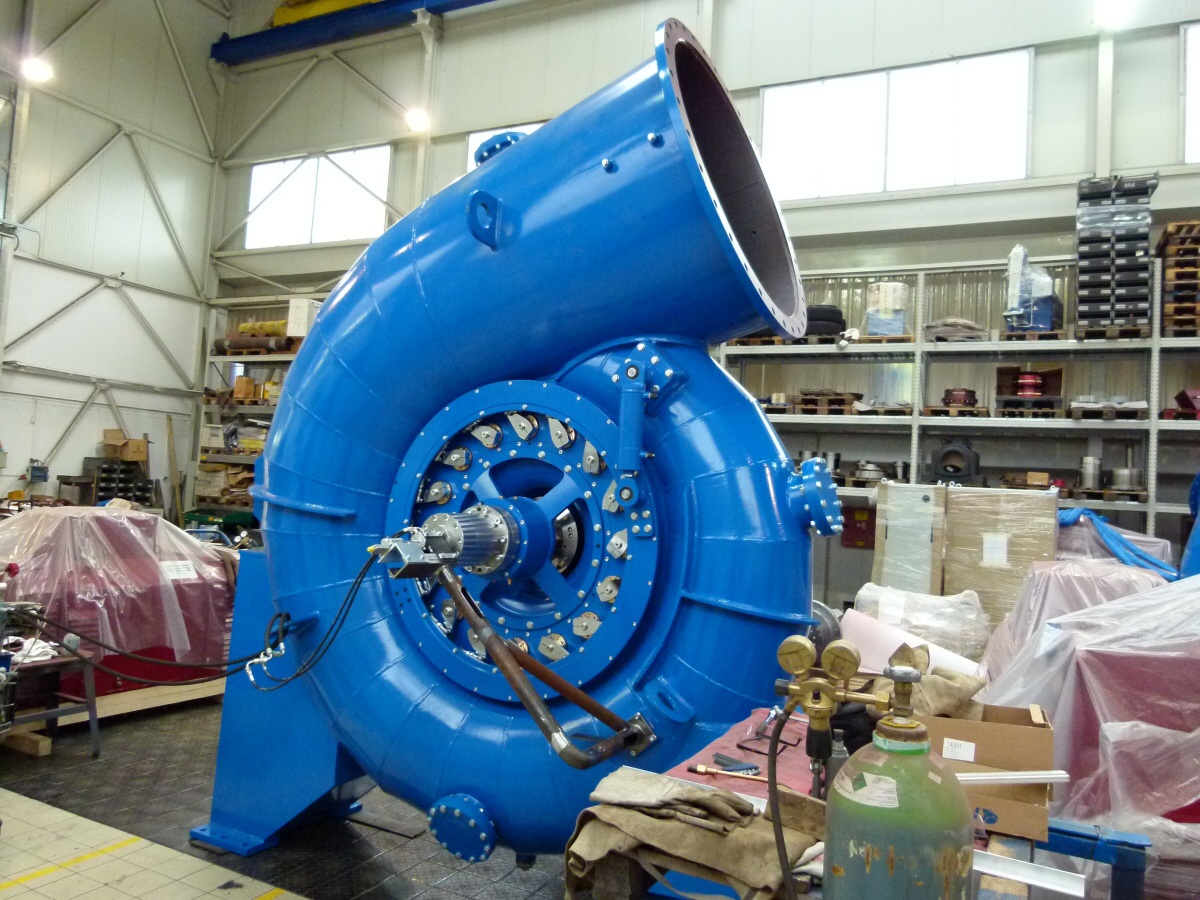
Kaplan Spiraltypekaplanturbinefr Hydrohrom s.r.o.
This article presents a comprehensive theoretical and CFD study of a Kaplan turbine, a type of hydraulic turbine that can adjust its blade and runner angles to achieve optimal performance. The authors propose a novel modelling and optimisation method that considers the effects of dimensionless fracture conductivity, a key parameter in the design of hydraulic turbines. The article also provides.

Kaplan sktypesshapedoubleregulatedhorizontalkaplanturbine
Kaplan turbine works on the principle of the axial flow reaction. In an axial flow turbine, the fluid moves by the impeller in a direction parallel to the impeller's axis of rotation. A Kaplan turbine works in the following way: First of all, the water introduces into the volute/scroll casing from the penstock.

Kaplan Turbine Zeco Hydropower
Kaplan S-turbine 0 0.1 1 10 100 Output [MW] 50 10 25 5 0 Head [m] CFD illustration: Pressure and velocity distribution in a bulb tubine. 6 Advantages of the bulb design Higher full-load efficiency and higher flow capacities of bulb and pit turbines can offer many advantages over vertical

Kaplan Turbine 3d Animation and Design YouTube
The Kaplan turbine was an evolution of the Francis turbine. Its invention allowed efficient power production in low- head applications which was not possible with Francis turbines. The head ranges from 10 to 70 metres (33 to 230 ft) and the output ranges from 5 to 200 MW. Runner diameters are between 2 and 11 metres (6 ft 7 in and 36 ft 1 in).
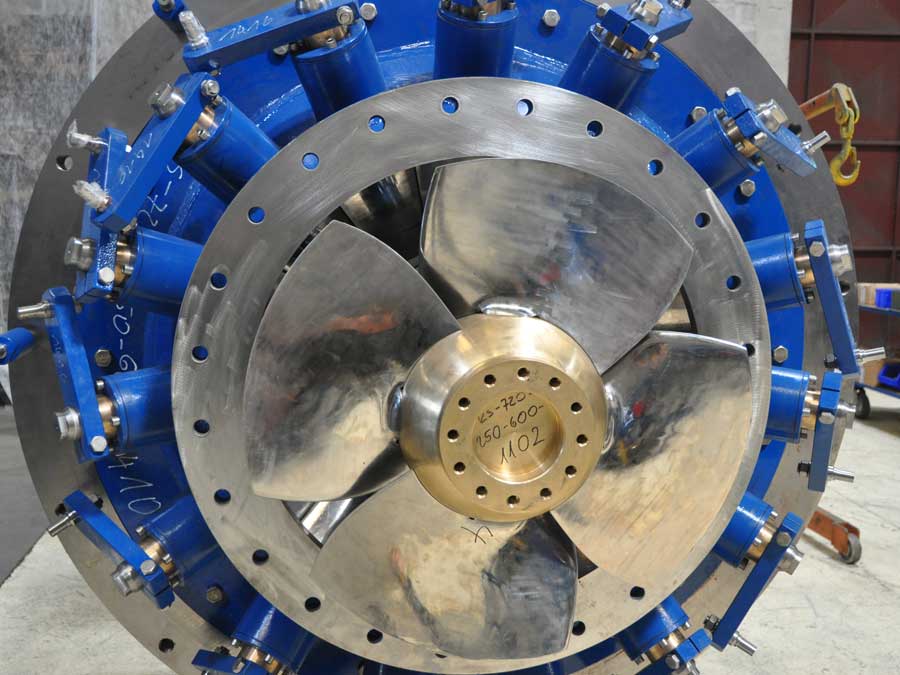
SIAPRO Kaplan turbines design and production
The commonest orientation currently being installed in the UK (at least by Renewables First) is vertical axis. Vertical-axis Kaplan's have the advantage of requiring the smallest footprint or land-take. A typical layout is shown in Figure 4. The Kaplan turbine is built into the concrete structure, with the inlet volute (basically a snail.

Kaplan sktypesshapedoubleregulatedhorizontalkaplanturbine
The vertical configuration of the Kaplan turbine allows for larger runner diameters (above 10 m) and increased unit power, as compared to Bulb Turbines. Our Kaplan turbines also keep the environment in mind. Engineered with a "fish-friendly" structure, to improve the survival rate of migrating species, and water-lubricated bearings and water.